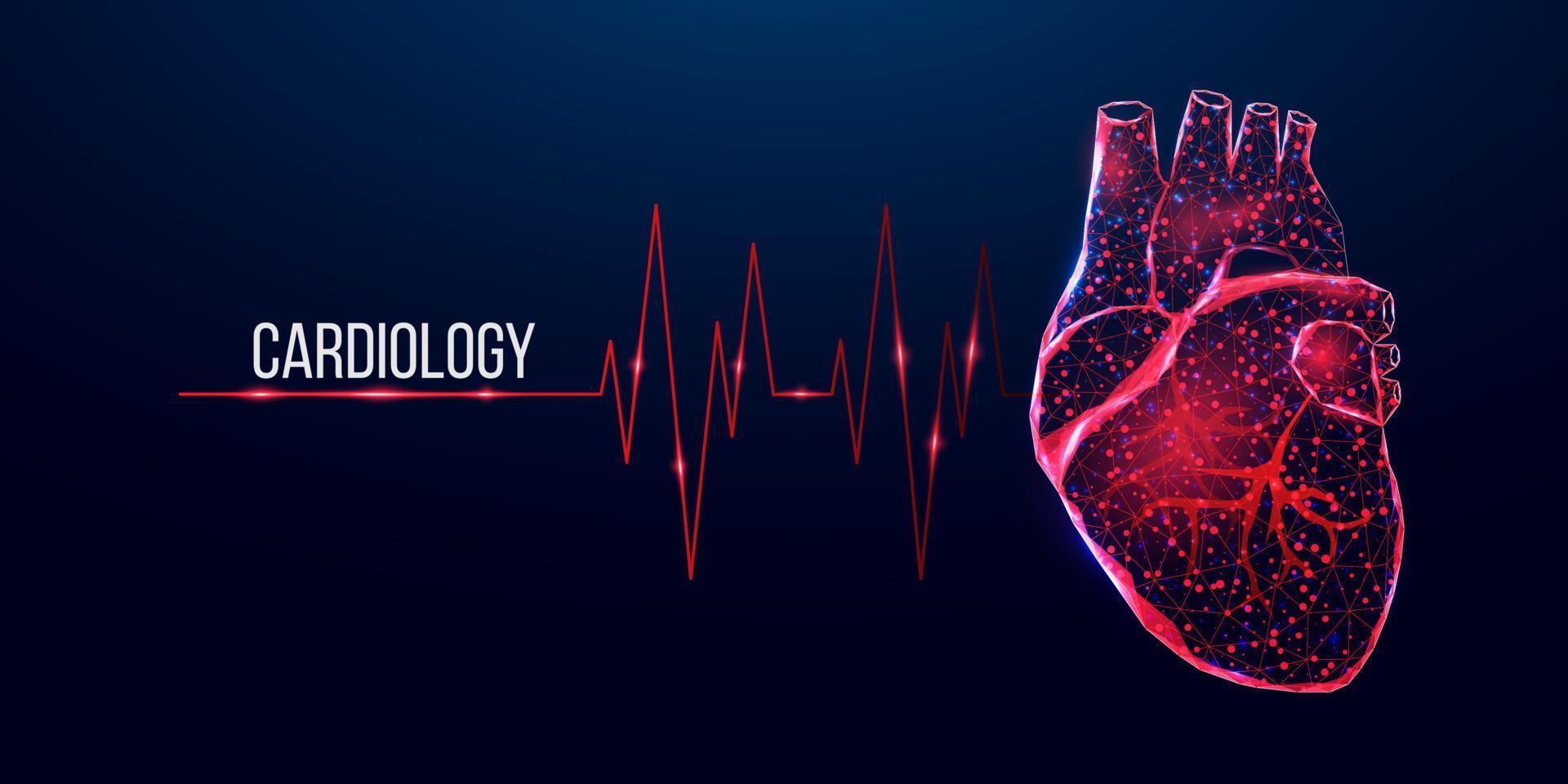Stay ahead of heart disease with Cardiology Jupiter’s approach
Stay ahead of heart disease with Cardiology Jupiter’s approach
Blog Article
Recognizing the Relevance of Cardiology in Modern Health Care Services
Cardiology plays a critical role in modern health care, specifically as heart disease continues to be the leading root cause of mortality worldwide. Breakthroughs in diagnostics and treatment have actually changed patient treatment, making it possible for earlier interventions and improved outcomes. The change in the direction of preventive cardiology empowers people to manage their wellness proactively. As modern technology remains to develop, the combination of cutting-edge solutions might even more redefine cardiology's influence on public health, prompting a more detailed evaluation of arising trends and their ramifications.
The Prevalence of Cardiovascular Disease and Its Impact on Public Wellness
Heart illness stays the leading reason of death internationally, its effect prolongs far past specific people to impact public wellness systems and economic situations. The high prevalence of cardiovascular disease places a considerable strain on health care resources, demanding increased financing for treatment, rehab, and prevention programs. Public health and wellness efforts must attend to threat variables such as obesity, cigarette smoking, and inactive way of livings, which add substantially to the rising incidence of heart conditions.Moreover, the economic worry related to heart disease is immense, encompassing not just direct medical prices but also indirect expenses associated with lost performance and premature mortality. Areas encounter difficulties in handling these prices, typically resulting in disparities in health care accessibility and end results. As the population ages and lifestyle-related risks continue to rise, the urgency for efficient cardiology treatments comes to be critical. Addressing heart condition is not just an issue of specific wellness yet also an essential public wellness priority.
Advances in Heart Diagnostics and Imaging Techniques
Recent advancements in heart diagnostics and imaging methods have revolutionized the field of cardiology, boosting the ability to check and detect heart problem. Methods such as heart MRI, CT angiography, and echocardiography have come to be progressively advanced, giving in-depth images of heart frameworks and functions. These modalities enable the early recognition of conditions like coronary artery disease, heart failure, and valvular disorders.Moreover, innovations in non-invasive diagnostics, such as wearable modern technology and remote tracking tools, have encouraged individuals and doctor. These tools promote real-time tracking of heart rhythms and various other important indications, leading to timely interventions. In addition, artificial knowledge is being incorporated right into imaging analysis, enhancing accuracy and performance in medical diagnosis.
Developments in Therapy Choices for Heart Conditions
Recent improvements in cardiology have led to substantial technologies in treatment choices for heart disease. These consist of sophisticated medical methods that improve procedural results and arising medications that supply new methods for therapy. As the area progresses, these innovations play an essential role in enhancing client treatment and outcomes.
Advanced Surgical Techniques
Technologies in medical methods have actually changed the landscape of cardiology, supplying brand-new hope for individuals with heart problems. Minimally intrusive procedures, such as catheter-based interventions, have greatly lowered recuperation times and health center keeps. Techniques like robotic-assisted surgical procedure boost accuracy, permitting cosmetic surgeons to browse complex physiological frameworks with greater accuracy. Innovations in imaging technology promote real-time visualization during procedures, boosting end results. Transcatheter aortic shutoff substitute (TAVR) exhibits a development in dealing with aortic constriction, enabling valve substitute without open-heart surgical procedure. Additionally, hybrid techniques that integrate catheter-based and medical techniques provide tailored options for various cardiac problems. These advanced surgical methods not just improve person safety and security yet likewise broaden treatment options, highlighting the vital duty of innovation in contemporary cardiology practices.
Emerging Therapies and medicines
As the landscape of cardiology proceeds to develop, arising medications and treatments play a crucial function in boosting therapy choices for heart conditions. Developments such as unique anticoagulants and advanced lipid-lowering agents have actually changed the management of heart diseases, substantially reducing client morbidity and mortality. Furthermore, the advancement of genetics treatments and regenerative medicine uses appealing opportunities for treating problems formerly regarded irreparable. Medical trials are consistently revealing the efficacy of these treatments, pushing the boundaries of traditional treatments. The assimilation of electronic health and wellness innovations assists in customized medicine, enabling for customized therapy strategies based on hereditary and way of life elements. Jointly, these improvements underscore the vibrant nature of cardiology, enhancing patient outcomes and redefining standards of care in modern-day healthcare.
The Function of Preventive Cardiology in Person Care
Precautionary cardiology plays an essential role in patient care by concentrating on the recognition of threat variables that add to heart illness. Via lifestyle adjustment strategies and early discovery methods, medical care providers can properly lower the incidence of cardio events - Cardiology. This proactive strategy not only improves individual end results yet also promotes lasting health and wellness
Risk Variable Recognition
While cardio illness continue to be a leading source of morbidity and mortality worldwide, reliable threat element recognition functions as a keystone of preventative cardiology. Identifying threat aspects such as high blood pressure, family members, diabetic issues, and hyperlipidemia background is essential for early intervention. Health care specialists make use of numerous screening approaches to evaluate these elements, permitting customized safety nets. Furthermore, understanding a patient's lifestyle choices, such as smoking cigarettes and physical lack of exercise, additionally educates risk analyses. This thorough evaluation makes it possible for medical professionals to develop tailored treatment plans focused on mitigating dangers. By prioritizing danger factor identification, healthcare systems can enhance patient outcomes and reduce the overall worry of cardio conditions, inevitably adding to enhanced public health and wellness approaches and resource allocation.
Lifestyle Alteration Methods
A wide variety of studies highlights the critical function of lifestyle alteration techniques in lowering cardiovascular condition risk. These methods include nutritional adjustments, blog here increased physical task, smoking cigarettes cessation, and weight management. By adopting a heart-healthy diet plan rich in fruits, veggies, entire grains, and lean proteins, people can reduce cholesterol degrees and high blood pressure. Regular exercise strengthens the heart and enhances overall cardiovascular wellness. Additionally, quitting smoking cigarettes greatly minimizes the risk of heart problem and enhances healing prices for those with status quo. Weight management further adds to cardio health by minimizing other risk factors such as diabetes and hypertension. Carrying out these way of living changes not only advertises specific wellness yet also functions as a foundation of precautionary cardiology in patient treatment.
Early Discovery Methods
Way of life modifications substantially contribute to reducing cardio disease risks, however they are most efficient when coupled with early detection methods. Precautionary cardiology stresses the value of recognizing prospective heart concerns before they rise right into severe problems. Methods such as high blood pressure tracking, cholesterol testing, and advanced imaging technologies like echocardiograms play important functions in assessing cardiovascular health and wellness. Biomarkers and hereditary testing additionally boost the precision of early detection, allowing for tailored preventative strategies. Regular heart danger analyses empower medical care suppliers to intervene proactively, possibly stopping cardiovascular disease and strokes (Cardiology care). By incorporating these very early detection techniques right into routine care, patients can profit from prompt way of life interventions and targeted therapies, ultimately boosting outcomes and boosting high quality of life
Integrating Innovation Into Cardiology Practices
As advancements in innovation remain to improve various areas, the assimilation of ingenious tools and systems right into cardiology practices has become necessary for improving patient treatment and outcomes. Telemedicine systems permit cardiologists to keep track of individuals remotely, enhancing access to care while reducing the burden on medical care facilities. Wearable devices, such as smartwatches, make it possible for continuous read the article heart rate surveillance, alerting both people and medical professionals to potential issues in real-time. Furthermore, man-made knowledge (AI) is being used to examine large amounts of cardiac information, helping in early diagnosis and customized therapy strategies. Advanced imaging methods, including 3D echocardiography, improve visualization of heart structures, resulting in more accurate interventions. Digital wellness documents (EHRs) simplify client info administration, guaranteeing that cardiologists have instant accessibility to important data. Together, these technological innovations are changing cardiology, advertising proactive management and boosted health and wellness end results for patients with cardiovascular conditions.
The Relevance of Patient Education And Learning and Involvement
Individual education and interaction play a pivotal function in the monitoring of cardio health. By outfitting individuals with knowledge concerning their problems, treatment alternatives, and way of living modifications, medical care providers empower individuals to take an active duty in their treatment. This aggressive method can bring about enhanced adherence to recommended medications, nutritional adjustments, and exercise regimens, ultimately lowering the danger of complications.Engagement likewise fosters a strong patient-provider connection, motivating open interaction and trust fund. When patients really feel informed and included, they are more likely to voice issues and ask questions, which can lead to better clinical outcomes. In addition, academic sources, such as workshops or digital platforms, can improve understanding and promote self-management strategies. On the whole, prioritizing patient education and involvement is important for improving cardio wellness, enhancing lifestyle, and reducing healthcare expenses related to cardiovascular diseases.
Future Trends in Cardiology and Their Potential Influence

Frequently Asked Concerns
What Lifestyle Adjustments Can Minimize Heart Problem Threat?
The current inquiry addresses lifestyle modifications that can substantially lower heart problem danger. Cardiology. Adopting a well balanced diet regimen, taking part in normal physical activity, preserving a healthy weight, managing stress, and staying clear of cigarette can notably improve cardiovascular health and wellness
How Can I Recognize Very Early Signs of Heart Problems?
Identifying very early indications of heart troubles entails surveillance signs such as breast discomfort, shortness of breath, exhaustion, and uneven heartbeat. Timely awareness of these indicators can trigger required clinical examination and intervention for much better outcomes.
What Are the Distinctions Between Cardiologists and Heart Surgeons?
The distinctions between cardiologists and cardiac surgeons lie in their functions; cardiologists mostly handle and detect heart disease with non-invasive techniques, while cardiac specialists perform surgeries to deal with architectural heart issues. Each plays a crucial, distinct duty.

Just how Typically Should I Get My Heart Wellness Checked?
The regularity of heart checkup varies based on individual threat variables. Usually, grownups ought to undertake examinations each to two years, while those with existing conditions might require even more constant evaluations as recommended by health care experts.
What Role Does Genetics Play in Heart Condition Risk?
Genes significantly affects heart disease threat, with domestic patterns showing inherited problems. Details genetics can predispose individuals to hypertension, cholesterol problems, and various other cardio troubles, highlighting the importance of hereditary testing in reviewing heart wellness. Heart condition stays the leading reason of death worldwide, its effect prolongs much beyond individual patients to affect public health systems and economic climates. Public health and wellness campaigns need to attend to danger elements such as obesity, smoking find more info cigarettes, and sedentary way of lives, which contribute significantly to the rising occurrence of heart conditions.Moreover, the financial problem associated with heart condition is enormous, including not only direct medical costs however also indirect expenses associated to lost productivity and early mortality. Preventive cardiology plays an essential duty in individual care by focusing on the recognition of threat elements that add to heart disease. Synthetic knowledge (AI) and device discovering are improving diagnostics and individual monitoring, allowing early discovery of heart conditions. The differences between cardiologists and heart doctors exist in their functions; cardiologists mostly detect and take care of heart problems with non-invasive methods, while cardiac specialists execute medical procedures to correct structural heart problems.
Report this page